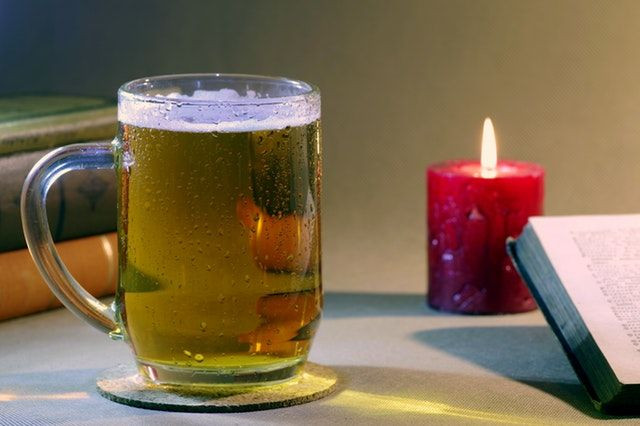Scientists Study Bubbles To Develop Perfect Head Of Beer

Beer is a religion to some diehards and the perfect head of beer is the holy grail. But is a perfect head of beer possible? Well, probably.
Enter science. A team of researchers from the University of Manchester in England have apparently "solved" the puzzle of how to make the perfect head of beer. A head of beer is the frothy foam atop a glass of beer produced by bubbles of gas (mostly carbon dioxide) rising to the surface.
Researchers used neutron beams fired at heads of beer and other frothy liquids, and computers to analyze the data in order to discover some quite interesting results. The data acquired might also be useful for the development of a range of products to improve the creamy topping on a flat white coffee, shampoos, firefighting foams and even oil absorbent foams used to corral oil spills.
Lead researcher Dr. Richard Campbell from Manchester University said the team's findings solve a long-standing mystery related to the lifetime of foams. The study was published recently in in the journal Chemical Communications.
Researcher used a neutron gun at the Institut Laue-Langevin (ILL) in France for the study. ILL is one of the world centers for research using neutrons. It provides one of the most intense neutron sources in the world and the most intense continuous neutron flux in the world in the moderator region: 1.5×1015 neutrons per second per cm2 with a thermal power of 58.3 MW. At ILL, the team fired neutron beams at the liquids such as beer used to make foams. The scientists sought to solve the problem at hand by studying "foam films," the building blocks of the bubbles themselves.
By reflecting neutrons off liquid samples, the team devised a new way to relate the stability of foam films to the way in which the additives arrange themselves at the surface of the liquid coating of bubbles to provide the stability needed to prevent them from bursting.
"Foams are used in many products — and product developers have long tried to improve them so they are better equipped for the task they are designed to tackle,” according to Dr. Campbell. "But researchers have simply been on a different track, thinking of general surface properties and not about the structures created when different molecules assemble at the surface of bubbles.”
He said it was only through the team's use of neutrons at ILL that it was possible to make this advance because only this measurement technique told them how the different additives arrange themselves at the liquid surface to provide foam film stability.
"We think this work represents a clear first indication that our new approach could be applied to a range of systems to aid the development of products that can make an impact in materials science and on the environment," he noted.
The team studied mixtures containing surfactants (or compounds that lower surface tension) and a polymer used in shampoos to develop a new way of understanding the samples that might help product developers formulate the ideal foam.
One potential application resulting from the study is that beers drinkers in the future might be able to enjoy a pint where the head lasts all the way to the bottom of the pint glass. Other applications include developing more effective products to remove surface pollutants like oil from the oceans by improving the action of oil slick cleaning detergents. The new applications might even save lives by making fire-fighting foam more effective.
"For decades scientists have tried to get a handle on how to control reliably the lifetime and stability of foams made from liquids that contain mixed additives," Dr. Campbell added.
"While the behavior of foams made up with just one additive is quite well understood. As soon as mixtures like those used in products were studied the results from research studies failed to paint a consistent picture. This is important, as some products benefit from foams that are ultra-stable and others from foams that are very unstable."



























